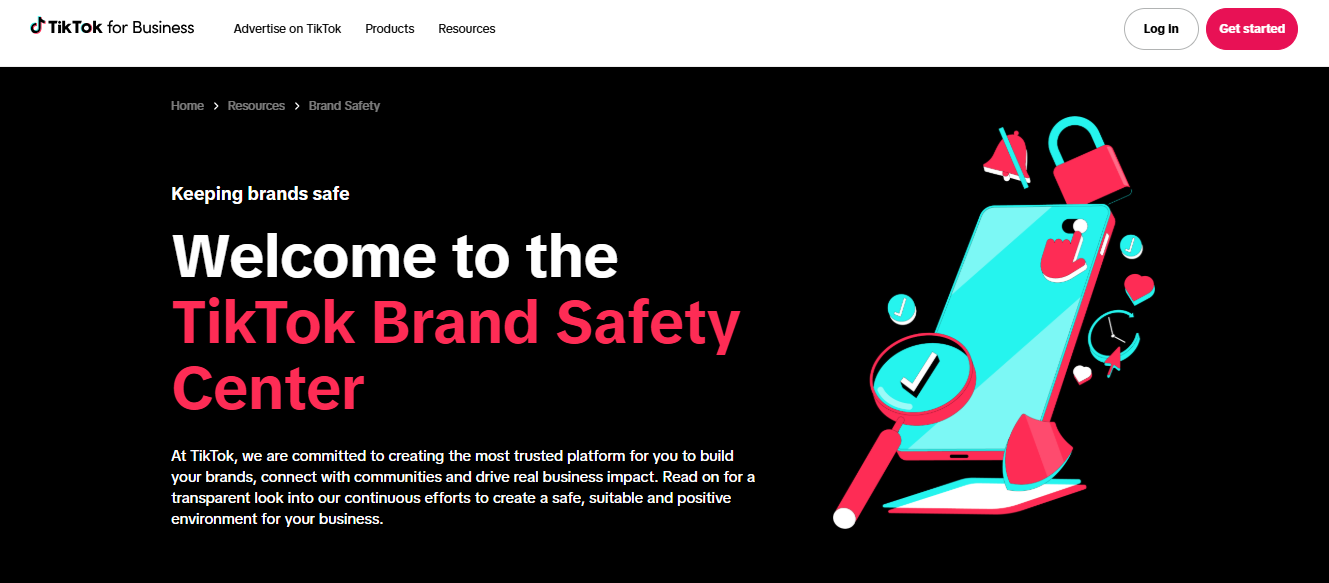In the world of social advertising, brand safety issues aren’t an “if”—they’re a “when”.
Today’s brands face more reputational risks than ever before. Platform volatility—from boycotts and countrywide bans to frequent algorithm changes—has made it harder for marketers to navigate and safeguard their presence online. At the same time, local regulations are evolving, particularly in regions like the UK, Australia and the EU. And with rising consumer expectations, brands are under increasing pressure to uphold trust and accountability online.
Protecting your brand strategy in this evolving landscape requires collaboration, foresight and planning. To help, we’ve gathered everything you need to know to create brand safety guidelines for a social-first world.
What is brand safety?
Brand safety refers to any strategy you use to protect your brand health and reputation from external impacts. Though it can apply offline, brand safety today mostly revolves around how your brand is perceived online.
For the most part, these measures focus on preventing ads from appearing alongside inappropriate or offensive content. For example, a company can create brand safety measures that prevent paid advertising efforts from popping up in content that promotes hate speech or violence. It’s an increasingly important strategy; 92% of people in the UK say it’s important that the content surrounding ads online is appropriate, whilst 80% of people worldwide say they’ll reduce their spending on products shown near violent content.
But brand safety goes beyond avoiding adjacency to extreme content. It also includes protecting long-term brand reputation by ensuring your content shows up in environments that support brand values, audience trust and sustainable growth.
Why is brand safety important?
Failing to protect your brand’s reputation online can result in reputational and financial loss. Social media makes brand safety even more critical, as it’s one of the primary ways customers discover, engage with and form opinions about your brand.
A proactive brand safety plan is the only way to mitigate risk on social. While most social networks have standards in place to prevent ads from showing up within harmful content, these standards are usually developed after a brand safety blunder makes a threat clear.
Some of these threats have had seriously harmful impacts, and led to significant platform changes. In 2024 seven French families sued TikTok for its failure to safeguard children from harmful content on the platform. TikTok introduced several new brand safety features in the same year in response to these concerns, including sensitivity controls that help brands decide where their ads appear.
Risk is a natural part of adopting a new social network, feature or tool. If you let that stop your brand from hopping on the latest social media marketing advancements, you risk falling behind your competitors and out of favor with your target audience. That’s a major risk in itself.
The only real way to protect your business online is to create brand safety guidelines that understand and address the social media landscape.
Download Sprout’s brand safety checklist
Brand safety and social media
The influence of social media advertising continues to grow rapidly, with total social ad spend projected to surpass $276 billion this year.
As the paid social game grows, potential risks grow alongside it. Communication and marketing professionals have to account for a slew of potential brand safety threats, including:
- Paid social ads appearing alongside harmful or damaging content
- User-generated content featuring false claims about a product or brand
- Scandals involving creator or influencer marketing partners who weren’t properly vetted
Thankfully, social also doubles as a powerful risk detection and prevention tool. One of the many benefits of social listening is that you can use it to monitor the larger conversation around your brand, illuminating any sources of potential controversy before they spin out of control.
Common brand safety risks to pay attention to in 2025
The first step in building a brand safety strategy is understanding the most common risks. These threats show up across social platforms and must be addressed to effectively safeguard your brand’s reputation online.
Ad misplacement
Since social platforms are independent networks, you have limited control over where your ads or content appear on a user’s feed. In serious cases, this can become an issue called ad misplacement, where your ads appear next to harmful or offensive content.
Ad misplacement is also impacted by changing social media algorithms, which can make it a challenge to prepare for where your ad is ultimately shown.
Misplacements can be more common if you’re investing in programmatic advertising. Though programmatic ads can increase your reach, the automatic nature of the strategy means you sometimes won’t know where your ads end up. You must regularly check your programmatic destinations and other parts of your strategy to prevent your ads from showing up in locations that could harm your reputation.
If you come across an ad that has been severely misplaced, the safest thing to do is to pull it. You can then assess why this has happened and reach out to the network owner for more information if needed. But the sooner you take an ad down, the less chance there is for its misplacement to cause brand safety issues.
Creator or influencer controversies
Partnering with influencers can be a smart way of furthering your reach across social media. But these partnerships can also come with huge risks if you don’t do your research.
If an influencer you’ve been working with becomes embroiled in controversy, its negative impacts could spill over and impact your brand. This can be the case even if you’re not directly involved in the controversy at all.
Appropriate research allows you to avoid working with influencers who might pose a risk to your brand in the future, based on reviews of their current views, values and content output. Use an influencer vetting tool like Sprout Social Influencer Marketing, which has inbuilt brand safety features that help you catch any red flags early.
Make sure to also review our 6 influencer brand safety considerations before you work with an independent creator, so you can find the right partners and prepare ahead of time.
Social comments and user-generated content
While you can control what you post, social media by nature invites interactions—comments, shares and reactions—that are often outside of your control.
Offensive or inappropriate comments can undermine your brand’s message, especially when they appear on paid ads. To mitigate this, regularly monitor your account’s content and create a social media moderation plan to remove any harmful comments. This can also become a major problem during UGC campaigns, as users will have control over how they shape the narrative.
Generative AI
The generative AI boom has created new concerns for social marketers. Bad-faith actors can use AI to target brand content with spam or harmful comments.
These crime-driven AI risks can be even more severe if your company is targeted by a significant attack. Deepfake scams, where criminals impersonate your brand or senior employees online, can be even more dangerous and can lead to huge financial and reputational losses. Always verify the profiles of your senior staff members, and flag any content or correspondence that’s coming from unauthorized channels.
If you’re using AI yourself without applying any safeguards, then this could also result in content that harms your reputation. For example, an AI-created post that includes misinformation when it goes live can harm the trust your customers have placed in your company. Read up on the ethical concerns of AI in marketing, and only use tools if they’re safe for your company.
Internal missteps
Sometimes brand safety concerns arise because of internal mistakes. A piece of content might be ill-considered and lead to a negative response. Rogue publishing can also lead to serious harm if it goes unchecked.
You can mitigate this by having a clear content review process, and applying smart steps to your content development. But it’s just as important to maintain a high level of account security over your socials. Review who has user permissions and access to your account regularly. Set a clear workflow in place for situations where team members leave their role or change departments. The stricter you are with these, the less likely it is for missteps to happen.
Brand safety across social networks
Before you can make brand safety guidelines of your own, it’s important to familiarize yourself with the existing brand safety controls across popular networks like Facebook, Instagram, X (formerly Twitter), Youtube and TikTok.
Brand safety on Meta platforms
Meta offers several brand safety controls that work across Facebook, Instagram and Messenger. These features allow you to choose the level of control over where your ad appears. Placements can be restricted by content topic, format and even source.
In January 2025, Meta changed its fact-checking and content safety protocols. This involved lifting certain content restrictions and updating its hateful conduct policy to be more lenient. This could lead to ads being placed next to offensive content on Meta platforms in the future, and is a key example of how platform operational changes can lead to increased brand safety concerns.
Brand safety on X (Twitter)
Brand safety has been a particularly hot topic on Twitter since its X rebrand. X has published several guidelines and policies centred around brand safety to reassure marketers on the platform. In 2024, the company also introduced several changes aimed at regaining advertiser trust and attracting businesses still hesitant to run ads on the platform.
Brand safety on YouTube
In 2021, YouTube became the first digital platform to receive content-level brand safety accreditation from the Media Rating Council which they maintained for a 5th year in a row. Their continued accreditation speaks to the many initiatives Google has taken to ensure advertisers get the most out of their investments in the network.
Brand safety on TikTok
TikTok manages a Brand Safety Center to provide marketers with up-to-date news and recommendations on brand suitability within the network.
As its footprint in the social media landscape grows, the TikTok team has been hard at work creating brand safety solutions within their ad platform. As of today, those features include the TikTok Inventory Filter, and Suitability Controls such as Category Exclusion and Vertical Sensitivity.
Tools and technology that support better brand safety
These Sprout-powered tools work together to better protect your brand across the social media landscape.
Content approval workflows
A thorough content approval workflow can prevent internal publishing missteps, and they’re much easier to manage if they’re tech-enabled.
With Sprout Social, you can build a seamless approval workflow that ensures all relevant stakeholders can sign off on content, whether they have a seat in the platform or not. Set decision-makers, establish a publishing timeline and respond to feedback requests, all in one place.
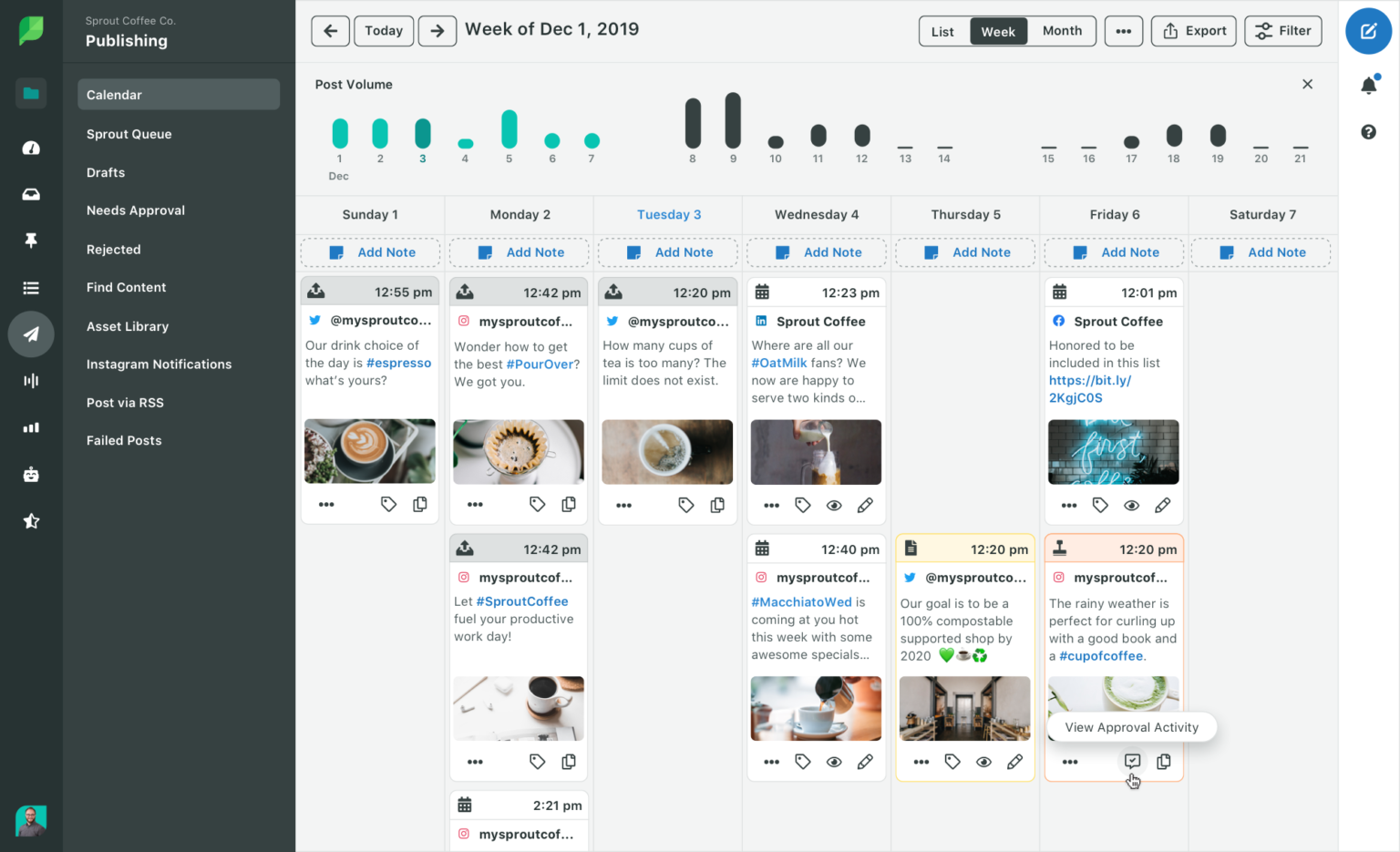
Blocked words
Keyword filtering automatically monitors, blocks or flags specific words or phrases within your content or interactions. It’s an effective way to avoid non-compliant language, which is particularly useful if you’re operating in a highly regulated industry.
Sprout’s Blocked Words feature lets you create custom word lists to prevent certain terms from being published across your direct messages (DMs) and social content.
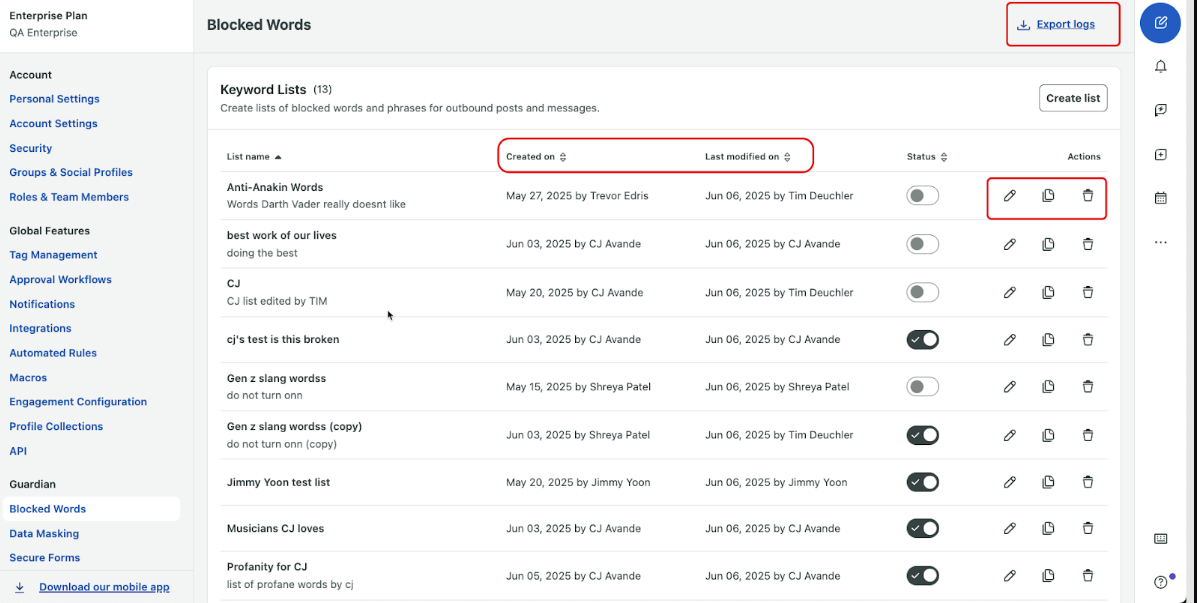
Social listening
Effective brand safety management often means being proactive. By gathering audience and industry insights, you can better understand your market and avoid topics or content that could cause reputational damage.
Social listening gives you a simplified way of collecting these insights directly from comments and engagements across your social accounts. Sprout’s listening tools can be used for early crisis prevention, allowing you to identify spikes and unfamiliar trending words. You can also set alerts that notify you about any new spikes.
Sprout’s listening tools can also be applied to brand safety insights. Gather data on how your business is perceived using sentiment analysis, and use this information to figure out the biggest threats to your brand.
Influencer brand safety tools
Tools designed to find and vet influencers can make sure your influencer campaigns are safer for your brand.
If you’re looking for your first influencer, follow Sprout’s step-by-step vetting process. Combine this with Sprout Social Influencer Marketing to access a vast database of potential partners, and more data on their metrics and the type of content they produce.
It also includes several built-in brand safety tools. Default categories like Alcohol and Adult content can be selected, and you can define custom rules to reflect any of your brand-specific sensitivities. You can also customize your safety rules with various hashtags, keywords or mentions to flag sensitive content. All of these rules will apply when you search for influencers to partner with, and can help you filter out creators who might pose a brand safety risk.
You can also further qualify influencers using dedicated Brand Safety Reports to feel confident that the partners you align yourself with don’t conflict with your brand values.
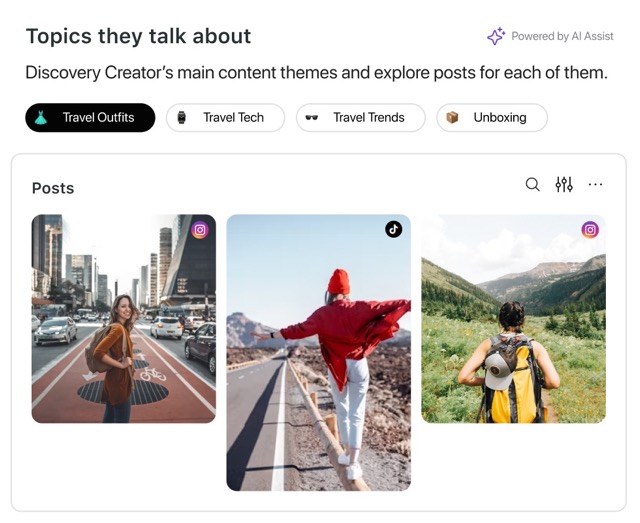
You can also manage campaigns directly in Sprout Social Influencer Marketing, making campaigns easier to manage for both your team and your partner.
Building brand safety guidelines into your social media strategy
Documented brand safety guidelines can empower others to take part in risk prevention strategies. Here we dive into how you can create and distribute your guidelines for maximum efficiency. If you want to dive deeper, we recommend checking out our brand safety checklist.
Step 1: Define brand standards
What is “inappropriate content”?
The answer might seem straightforward but the more you dig into it, the more nebulous it becomes. First, you need to document any platform-specific guidelines that your accounts need to follow.
Then, discuss and outline more general guidelines based on your industry, your brand and the types of content you publish. You’ll also need to create specific guidelines for influencer campaigns, AI use and for how you interact with comments. The clearer and more up-to-date each of these are, the easier it’ll be for you to create and manage your content safely.
Step 2: Identify a point person for brand safety issues
Brand safety is everyone’s responsibility. But it’s still worth assigning a dedicated brand safety lead or cross-functional liaison, who’s primarily responsible for monitoring risks and coordinating response efforts
Once it’s been decided, socialize the role within your company. That way, when an employee notices a potential brand safety risk, they’ll know just who to call. Include their contact information on all of your guideline documents, so it’s clear who should be contacted in an emergency.
Step 3: Outline a response strategy
Even the most preventable crisis can feel random when it strikes. An actionable, tiered response strategy will enable your team to work quickly and efficiently as they address stakeholder concerns based on the severity of the situation.
Create a crisis management plan that outlines what steps to take in the event of a brand safety incident. People will likely turn to your social pages for updates on how your company is responding, so be sure to include guidelines on sharing public apologies as well.
It’s also worth creating response templates using a tool like Sprout’s Asset Library. Having this to hand allows you to respond quickly to any immediate safety concerns.
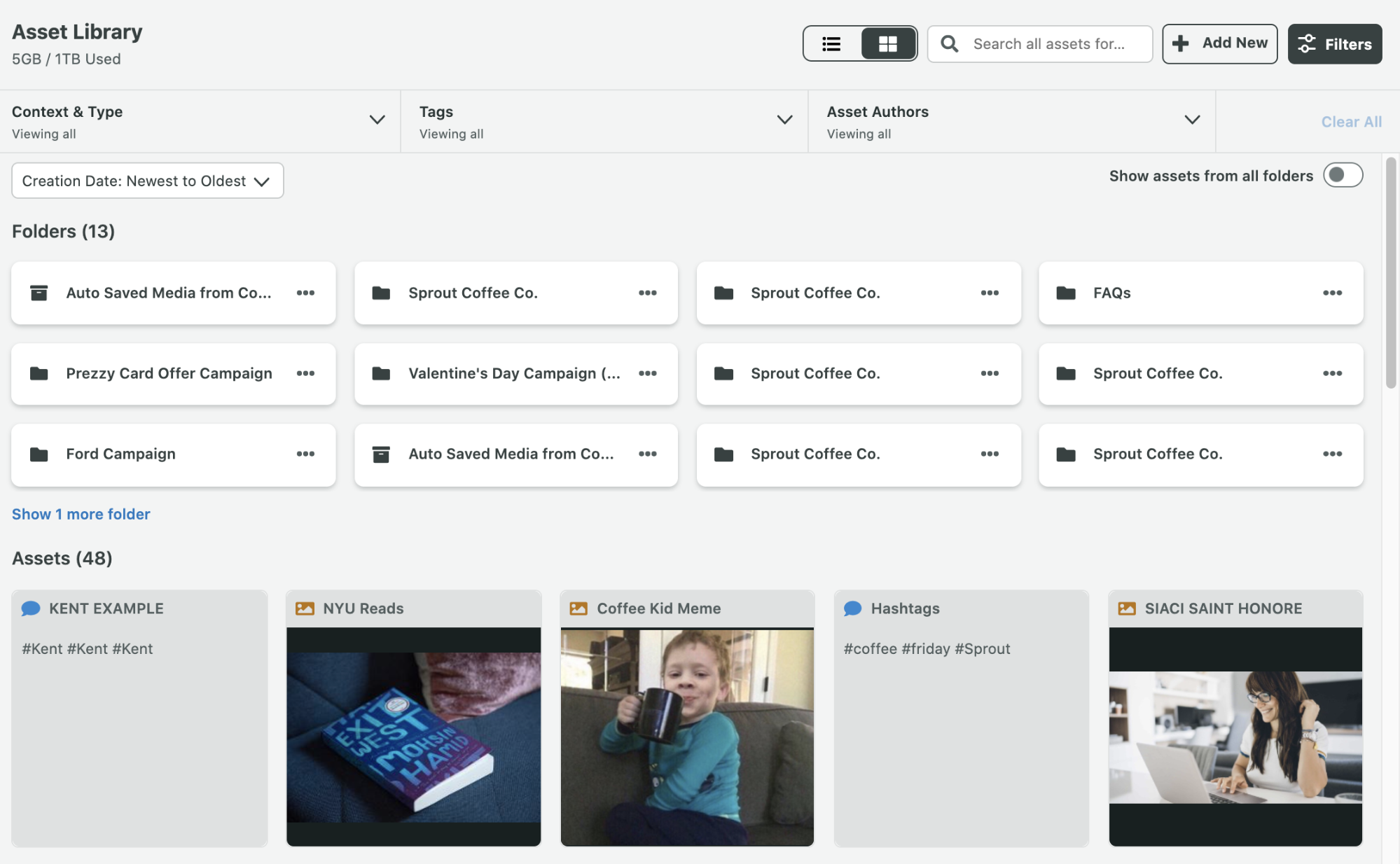
Step 4: Set up a social listening topic
Use a social listening tool to set up a brand health topic so you can monitor the ongoing conversations around your brand. An evergreen brand health social listening topic means your brand is always on the lookout for potential harms, and allows you to stay clued in on how your audience feels about your account.
As noted above, Sprout’s Listening tool has three features that can help you proactively address budding brand health crises:
- Spike Alerts to notify you of shifts in conversation activity around your Listening Topics.
- Sentiment Analysis to understand trends in audience perception around your brand.
- Word Cloud to quickly observe what topics are driving the conversations around your brand.
Step 5: Creating onboarding training
Social networks are big places. It’s nearly impossible for a single team to stay on top of every potential brand safety threat that may arise. To maintain a positive reputation, you need to equip everyone with the resources they need to help stop a threat in its tracks.
Ask that managers include links to brand safety guidelines and protocols in all onboarding materials. Include quick primers on why these materials matter and what teams can do to help. Reinforce training with additional documents, like influencer vetting checklists and AI use policies. Keep these resources easy to find so all employees can quickly access them whenever they need to.
Brand safety first
Protecting a brand’s reputation isn’t any single team’s responsibility. Everyone in your company should be equipped to stop a potential brand safety mishap in its tracks.
Start with our brand safety checklist, built specifically for social media managers. This comprehensive checklist outlines the esential steps you need to strengthen your brand’s reputation and stay protected across all major social platforms.
The post Brand safety: What you need to know to protect your brand’s reputation appeared first on Sprout Social.


